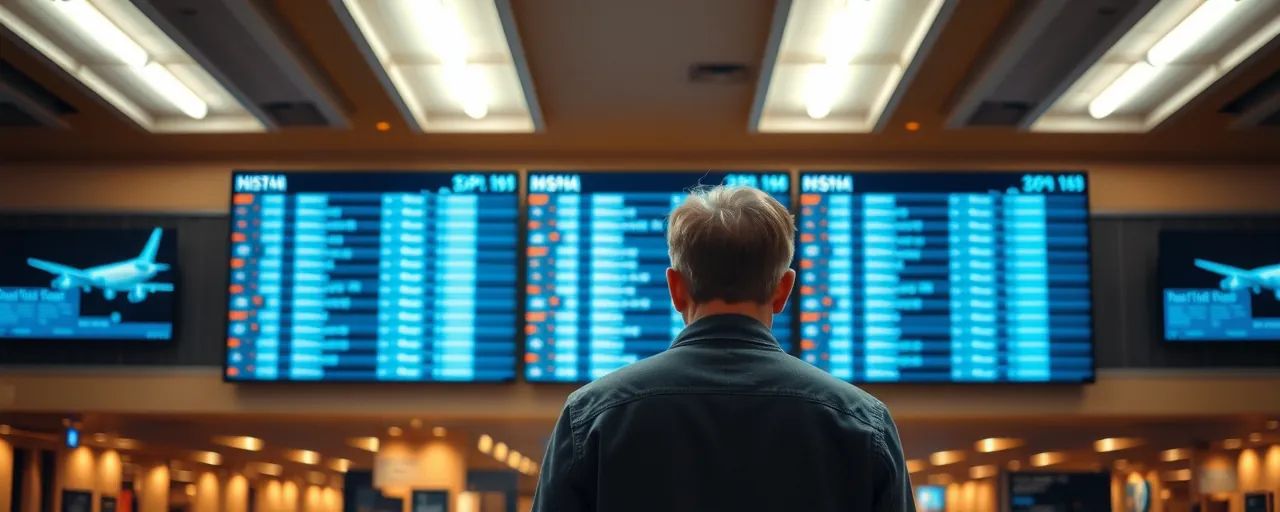A Smarter Path to Safer Skies
America’s airports are buzzing. Air travel is climbing 3.5 percent each year, packing runways and testing the limits of our air traffic system. The Federal Aviation Administration faces a clear challenge: train controllers faster, keep costs down, and never waver on safety. Their answer lies in Tower Simulation Systems, high-tech tools that are transforming how we prepare controllers to manage our skies. These systems deliver results, cutting training time and saving millions while keeping safety first.
Last summer, flight delays surged 15 percent, a wake-up call that our system needs urgent upgrades. The FAA’s response sidesteps wasteful spending, focusing instead on technology that works. This approach champions efficiency and accountability, ensuring every dollar spent strengthens our skies for travelers, businesses, and communities nationwide.
Why does this matter to you? Every late flight or crowded airspace disrupts lives—parents heading to see kids, workers catching meetings, or goods fueling our economy. The FAA’s simulator expansion tackles these issues directly, delivering practical solutions that resonate with anyone who flies.
Simulators: Efficiency Meets Excellence
Tower Simulation Systems recreate airport complexities with precision, from runway crossings to emergency scenarios. A 2021 study showed new controllers finish training 27 percent faster using these systems, saving the FAA about $55,000 per trainee. Experienced controllers transferring to new facilities complete recertification 21 percent quicker. These savings add up, freeing resources for other critical safety priorities.
The 2024 FAA Reauthorization Act requires simulator access for every tower controller, a mandate now in action with upgrades at 56 sites, including Newark Liberty International Airport. Trainees practice year-round in a safe, controlled setting, mastering skills before guiding actual flights. This method outshines slower, costlier on-the-job training, which risks delays and safety gaps.
Some push for massive hiring surges or new facilities, claiming it’s the only way to keep up. Yet, these plans often balloon budgets without guaranteed outcomes. Simulators prove a better way, leveraging technology to meet demand efficiently. Why gamble on untested spending when proven tools already deliver?
Innovation Over Excess
The simulator program embodies a commitment to smart governance. For years, Republican lawmakers have urged the FAA to prioritize targeted investments—upgrading vulnerable radar systems, fostering public-private partnerships, and focusing on measurable safety gains. The simulator rollout delivers exactly that: cost savings, faster training, and a workforce ready for rising demand, all without expanding the FAA’s budget footprint.
Others advocate for sweeping federal spending, like $8 billion recapitalization plans or $43 million hiring boosts, arguing it’s essential for safety and equity. But these proposals risk inefficiency, piling costs onto taxpayers without clear results. The FAA’s tech-focused strategy shows that innovation, not endless funding, drives progress. Simulators are a prime example, proving that lean investments can yield outsized benefits.
With air travel projected to grow through 2030, sticking to outdated systems or overfunded programs isn’t an option. The FAA’s simulator expansion sets a standard for government efficiency, focusing on what works—technology, accountability, and safety.
Ready for the Future
The timing is perfect. The FAA is hiring 2,000 controllers in 2025, doubling academy classes, and expanding programs like the Collegiate Training Initiative, which has fast-tracked over 200 graduates. Simulators ensure these new hires are ready faster, as Acting FAA Administrator Chris Rocheleau noted, providing “a high-tech space to learn” for a demanding travel season.
This builds on decades of modernization. Since the 2003 NextGen initiative, the FAA has shifted to satellite navigation and consolidated radar centers. Simulators advance that mission, closing the gap between soaring demand and controller capacity. Can we afford delays? Last summer’s 15 percent delay spike answers that question.
The FAA’s focus on technology—simulators, digital towers, and automation—promises a future where our skies stay safe and efficient. This is government at its best: solving real problems with innovation, saving taxpayer dollars, and putting safety above all. The simulator program is a victory for every American who trusts our air traffic system.
